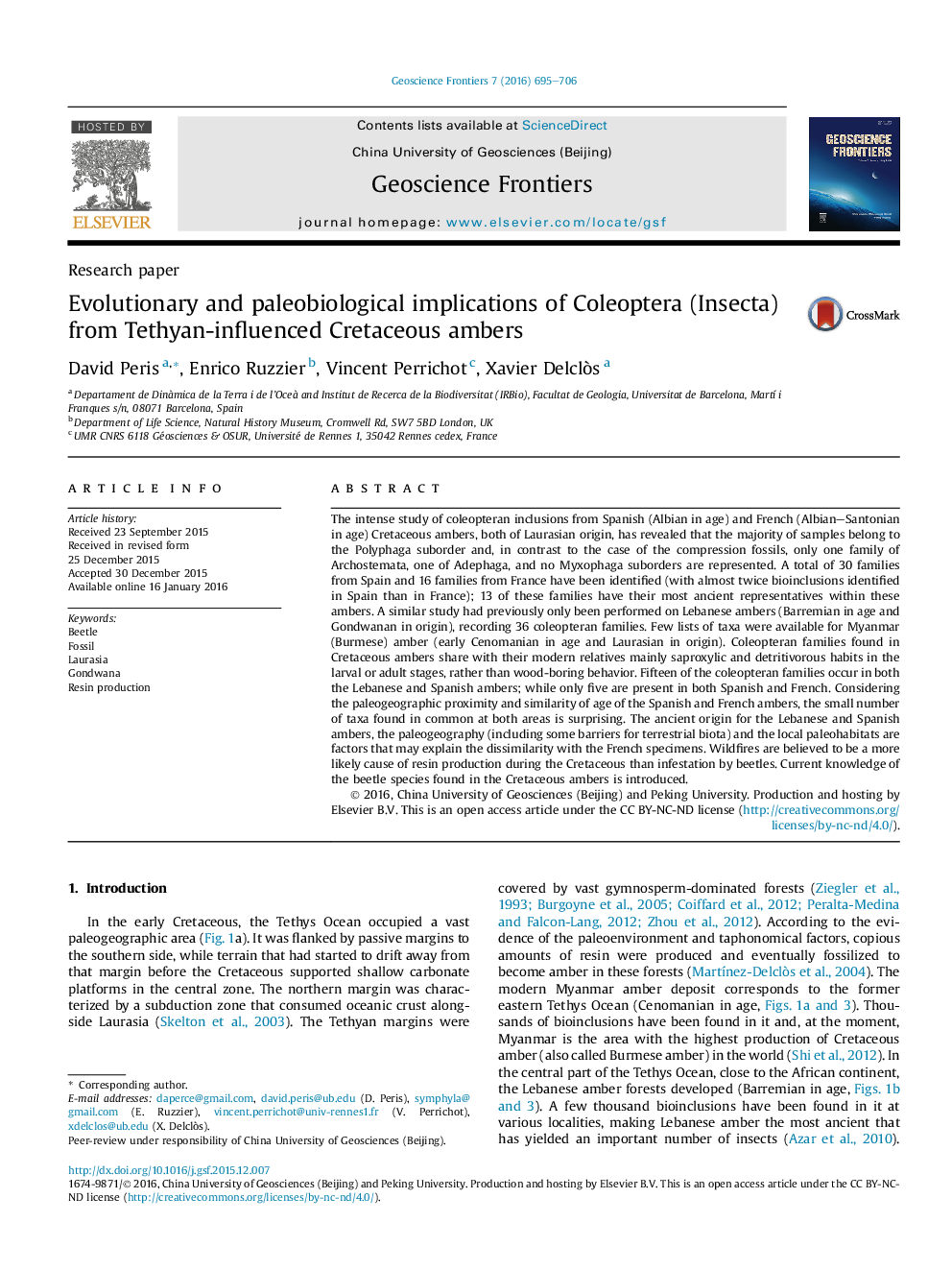| Article ID | Journal | Published Year | Pages | File Type |
|---|---|---|---|---|
| 4681468 | Geoscience Frontiers | 2016 | 12 Pages |
•Coleoptera were not vectors for the resin production that resulted in early–middle Cretaceous ambers.•Ancient representatives of at least 13 families are embedded in these ambers.•Age, paleogeography or local paleohabitat could influence dissimilar communities.•Current knowledge of the beetles in Cretaceous ambers is established.
The intense study of coleopteran inclusions from Spanish (Albian in age) and French (Albian–Santonian in age) Cretaceous ambers, both of Laurasian origin, has revealed that the majority of samples belong to the Polyphaga suborder and, in contrast to the case of the compression fossils, only one family of Archostemata, one of Adephaga, and no Myxophaga suborders are represented. A total of 30 families from Spain and 16 families from France have been identified (with almost twice bioinclusions identified in Spain than in France); 13 of these families have their most ancient representatives within these ambers. A similar study had previously only been performed on Lebanese ambers (Barremian in age and Gondwanan in origin), recording 36 coleopteran families. Few lists of taxa were available for Myanmar (Burmese) amber (early Cenomanian in age and Laurasian in origin). Coleopteran families found in Cretaceous ambers share with their modern relatives mainly saproxylic and detritivorous habits in the larval or adult stages, rather than wood-boring behavior. Fifteen of the coleopteran families occur in both the Lebanese and Spanish ambers; while only five are present in both Spanish and French. Considering the paleogeographic proximity and similarity of age of the Spanish and French ambers, the small number of taxa found in common at both areas is surprising. The ancient origin for the Lebanese and Spanish ambers, the paleogeography (including some barriers for terrestrial biota) and the local paleohabitats are factors that may explain the dissimilarity with the French specimens. Wildfires are believed to be a more likely cause of resin production during the Cretaceous than infestation by beetles. Current knowledge of the beetle species found in the Cretaceous ambers is introduced.
Graphical abstractFigure optionsDownload full-size imageDownload as PowerPoint slide
